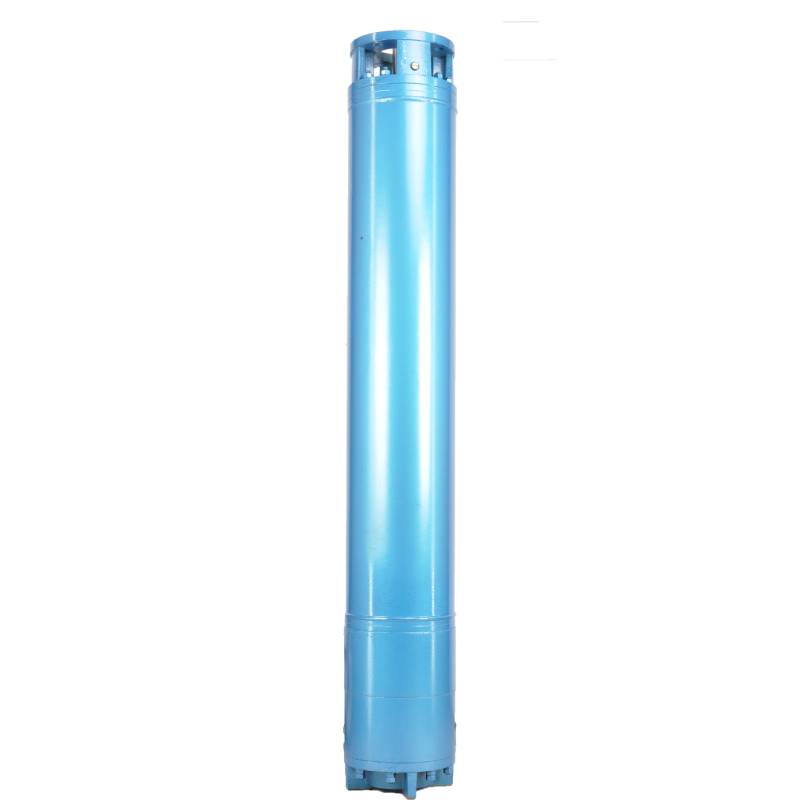Dec . 05, 2024 15:27 Back to list
submersible industrial pump
Understanding Submersible Industrial Pumps
Submersible industrial pumps are an essential component in various industrial applications, particularly in situations where fluid needs to be moved from one location to another. These pumps are designed to operate while submerged in the fluid they are pumping, making them ideal for applications such as dewatering, sewage treatment, and wastewater management. In this article, we will delve into the working principles, applications, advantages, and maintenance of submersible industrial pumps.
Working Principles
Submersible pumps operate by converting electrical energy into hydraulic energy. The crucial part of these pumps is the motor, which is encased in a sealed housing to prevent water ingress. The pump’s impeller, which is attached directly to the motor shaft, spins to create a flow of fluid. This movement generates low pressure at the eye of the impeller, which draws fluid into the pump. Once the fluid enters, it is propelled through the pump casing and out through a discharge pipe.
These pumps are usually equipped with a float switch that activates the pump when the water level rises to a certain height. This automatic operation is particularly beneficial in scenarios such as flooded basements or waterlogged areas, where continuous pumping is required to prevent damage.
Applications
Submersible industrial pumps find use in various sectors including
1. Construction and Mining In construction sites, these pumps efficiently remove excess water from excavation sites. Similarly, in mining, they are used for dewatering to ensure operational safety.
2. Wastewater Treatment Submersible pumps are crucial in sewage treatment plants where they handle the transport of sewage and effluents through the treatment process.
3. Agriculture These pumps assist in drainage and irrigation processes, ensuring that fields are adequately irrigated while removing excess water after heavy rain.
4. Oil and Gas Industry In this sector, submersible pumps are often used to extract oil from wells or to pump out water from drilling sites.
5. Marine Applications These pumps can also be utilized for shipballast systems and to keep water levels in check in boats and ships.
Advantages
Submersible industrial pumps offer several advantages that make them a preferred choice in many applications
submersible industrial pump

- Efficiency Since the motor is submerged, these pumps can efficiently move large volumes of fluid with relatively low energy consumption.
- Overheating Prevention Being submerged in fluid helps keep the motor cool, reducing the risk of overheating and prolonging the lifespan of the pump
.- Reduced Noise Levels Unlike surface pumps, submersible pumps operate quietly since they are underwater, making them suitable for residential and urban environments where noise can be a concern.
- Space Saving Because they are submerged, submersible pumps often require less space and can be installed in tight or confined areas.
Maintenance
Proper maintenance is key to ensuring the longevity and reliability of submersible pumps. Here are some tips
1. Regular Inspections Conduct routine inspections to check for wear and tear, especially on mechanical seals and bearings.
2. Check the Electrical Components Ensure that all electrical connections are secure and that there are no signs of corrosion.
3. Clean the Pump Remove any debris or sediment build-up from the pump housing and impeller to maintain optimal performance.
4. Monitor Performance Keep an eye on the pump’s performance metrics such as discharge pressure and flow rate to catch any irregularities early.
5. Professional Servicing For complex issues, it is advisable to enlist the help of professionals who specialize in submersible pump services.
Conclusion
Submersible industrial pumps are indispensable in modern industrial applications, providing an efficient, reliable solution for transporting liquids across various environments. Understanding their operation, applications, and maintenance can help industries optimize their use, ensuring both efficiency and safety. Whether in construction, wastewater treatment, or agricultural settings, these pumps play a vital role in managing fluid movement effectively. As technology advances, we can expect even more innovations that enhance the capabilities of submersible pumps in the industrial sector.
-
Submersible Water Pump: The Efficient 'Power Pioneer' of the Underwater World
NewsJul.01,2025
-
Submersible Pond Pump: The Hidden Guardian of Water Landscape Ecology
NewsJul.01,2025
-
Stainless Well Pump: A Reliable and Durable Pumping Main Force
NewsJul.01,2025
-
Stainless Steel Submersible Pump: An Efficient and Versatile Tool for Underwater Operations
NewsJul.01,2025
-
Deep Well Submersible Pump: An Efficient 'Sucker' of Groundwater Sources
NewsJul.01,2025
-
Deep Water Well Pump: An Efficient 'Sucker' of Groundwater Sources
NewsJul.01,2025
-
 Submersible Water Pump: The Efficient 'Power Pioneer' of the Underwater WorldIn the field of hydraulic equipment, the Submersible Water Pump has become the core equipment for underwater operations and water resource transportation due to its unique design and excellent performance.Detail
Submersible Water Pump: The Efficient 'Power Pioneer' of the Underwater WorldIn the field of hydraulic equipment, the Submersible Water Pump has become the core equipment for underwater operations and water resource transportation due to its unique design and excellent performance.Detail -
 Submersible Pond Pump: The Hidden Guardian of Water Landscape EcologyIn courtyard landscapes, ecological ponds, and even small-scale water conservancy projects, there is a silent yet indispensable equipment - the Submersible Pond Pump.Detail
Submersible Pond Pump: The Hidden Guardian of Water Landscape EcologyIn courtyard landscapes, ecological ponds, and even small-scale water conservancy projects, there is a silent yet indispensable equipment - the Submersible Pond Pump.Detail -
 Stainless Well Pump: A Reliable and Durable Pumping Main ForceIn the field of water resource transportation, Stainless Well Pump has become the core equipment for various pumping scenarios with its excellent performance and reliable quality.Detail
Stainless Well Pump: A Reliable and Durable Pumping Main ForceIn the field of water resource transportation, Stainless Well Pump has become the core equipment for various pumping scenarios with its excellent performance and reliable quality.Detail
